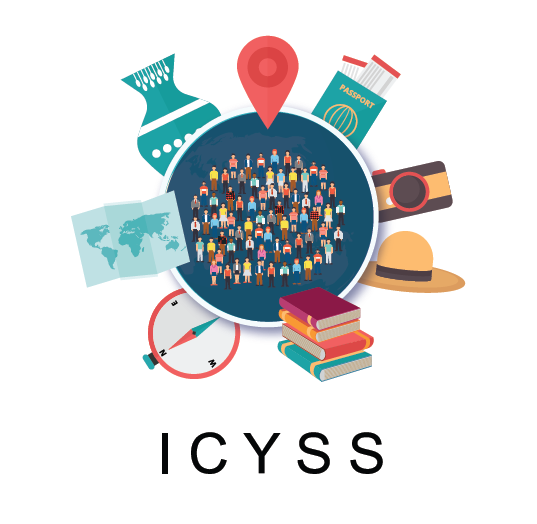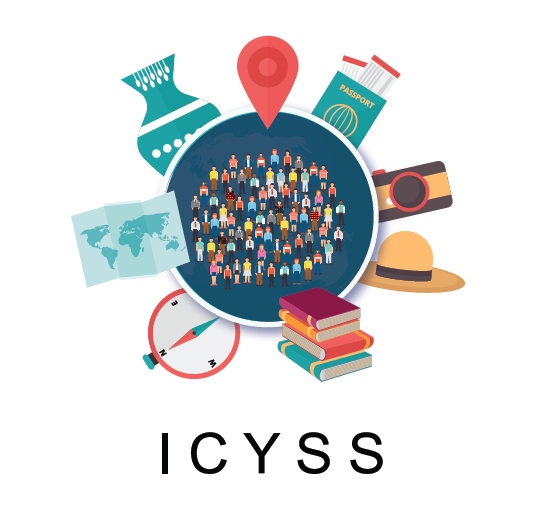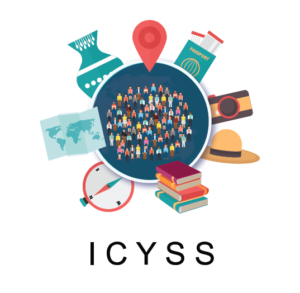ICYSS RULE BOOK 2019
International competitions play a pivotal role in educating gifted students and open new possibilities for expanding their knowledge of natural sciences.
Such competitions play a significant part in teaching students to:
- Conduct research
- Showcase their knowledge and creativity
- Present and discussed the results of their studies
- Formulate research reports
- Present in foreign languages
- Exchange experiences with their peers from other countries
- Meet new peoples and cultures
The International Conference of Young Scientists – Social Sciences (ICYSSSS) is a special individual competition of research papers from the fields of psychology, sociology, history, geography, and economics.
All participants must be aged between 14 and 19. Depending on the date of the conference, students who had graduated from high school but have not yet begun their university studies may also take part in the competition.
Each student must prepare a research paper on a topic of choice from any of the aforementioned fields. Research papers from the field of economics are excepted from this rule and students are assigned topics to conduct research on. Students are required to present their findings and research papers in a ten minute exposition before the international panel of judges, consisting of experts in the aforementioned fields. The official language of the conference is English.
The Institute for Gifted and Talented Youth Belgrade and The Regional Center for Talented Youth founded the ICYSSS with the international partners who have been organising similar international competitions in various fields for over ten years.
The competition rules are to be published and made available to everyone so as to provide equal opportunities for international communications among all partners.
Article 1 – General
The international competition of research papers is the individualistic competition of academic and scientific research in the field of SOCIAL SCIENCES conducted by high school students. Participants shall be classified into subject-based categories by a committee comprising scientists and experts in each relevant fields.
Each country can take part in the competition with at least one and as many as six research papers.
Student participants shall be accompanied by their Team Leaders. The number of team leaders attending the competition shall be decided based on the number of student participants from the given country and the organisers’ capacities.
Each country shall have a competition coordinator who is to organise and prepare student teams and team leaders for the competition.
Finally, coordinators may be the ICYSSS Managing Board members, whereas team leaders may be ICYSSS International Board members.
Article 2 – The Organising Committee
The first announcement of the competition is to be published at least half a year before the date of the competition.
The first announcement is to provide information about the location, general information and deadlines for submitting abstracts.
The Organising Committee may impose limitations on the number of student participants and presentations.
The Organising Committee guarantees to provide appropriate conditions for all participants, as well as prepare audio-visual equipment in order to ensure the best conditions for delivering presentations.
The Organising Committee shall, in compliance with the competition rule book, name the panel of judges who will assess the research papers.
The Organising Committee shall decide on the guidelines for assessing presentations. These guidelines usually include points such as:
- The research problem
- Methods and techniques used in order to solve the research problem
- Results and conclusions
- The degree of independence while conducting research
- The presentation of the paper and the ability to answer the judges’ questions
The Organising Committee shall provide the awards for the winners.
Article 3 – Submitting Abstracts
Presentation abstracts are to be submitted to the Organising Committee in
digital format and, if possible, as a hard copy by the deadline stipulated by
the Committee.
Presentations shall be classified based on the field of study into following categories:
- PSYCHOLOGY
Students are to present authentic research papers on any chosen subject in the field of psychology.
- SOCIOLOGY
Students are to present authentic research papers on any chosen subject in the field of sociology.
- GEOGRAPHY
Students are to present authentic research papers in the field of geography. Priority subjects are: social geography, tourism, environment preservation urban planning, demographics, and the influence of economic operations on landscapes and environment and physical geography (geology, geomorphology, climatology, and hydrology) in service of humankind.
- HISTORY
Students are to present authentic research papers on any chosen subject in the field of history, with the possibility of writing papers in the field of archaeology and history of art.
- ECONOMICS
Students are to present research papers on the previously assigned topics. The topics for the ICYSSS 2018 are:
- The Economic Impact of Brexit
- Artificial Intelligence – Do Benefits Outweigh the Risks
- The European Migrant Crisis – Economic and Political Challenges.
Students are to choose one of the given topics and conduct research, and present their results, findings and conclusions at the competition.
The guidelines for writing the abstract can be found in the Rule Book Appendix.
Article 4 – The Selection Process
The Committee shall not consider abstracts, which are not in compliance with the Rule book and the Research paper writing guidelines.
Should the Organising Committee impose limitations on the number of participants per scientific field, the Committee shall select the research papers for the competition based on the submitted abstracts.
Article 5 – Presentations
The official language of the conference is English.
In case of co-authorship, one author only may present the paper.
Presentations must contain results of the research the student conducted individually or with other students under mentor’s supervision.
Each presentation before the panel of judges may last as long as 10 minutes. The participant may use previously prepared audio-visual materials during the presentation. /audio-visual materials may not be downloaded from online sources/.
The head of the evaluation committee may decide to allow additional preparation time.
All members of the evaluation committee may ask the author follow-up questions after the presentation.
Article 6 – Evaluation Committee
The Organising Committee shall choose the members of the Evaluation Committee.
Each field of study must have members of the Evaluation Committee who are eminent university experts and scientists in the respective field.
The Evaluation Committee must comprise at least five members for each field of study.
The Organising Committee shall name the head of each Evaluation Committee.
The Evaluation Committee shall assess each presentation individually, with marks ranging from 1 to 10, in compliance with the following grading curve:
Very bad: 1-2
Bad: 3-4
Satisfactory: 5-6
Good: 7-8
Excellent: 9-10
The overall score shall be calculated as the sum total of the marks given by each member of the Evaluation Committee, divided by the number of Committee members.
The head of the Committee may ask other members to clarify their marks.
If the Committee comprises more than six members, the lowest mars shall not be taken into the consideration.
Additionally, if the Committee comprises more than seven members, the highest mar shall not be taken into consideration.
Finally, if one of the members is the Team Leader of the team presenting in the conference, the marks of that member shall not be taken into consideration for the respective presentation.
Article 7 – Evaluating Accomplishments
Participants shall be ranked within their respective study field based on the average grade. The awards shall be given as follows:
One First place – Gold medal
Two Second places – Silver medal
Three Third places – Bronze medal
Depending on the possible problematic situations /same average grade etc/, the Organising Committee may, in agreement with the Evaluation Committee increase the number of medals awarded.
If the paper awarded one of the three places was co-authored, the student presenter shall be given the medal and the diploma for his or her accomplishment, whereas the co-authors shall be given participation certificates for the research project, which was awarded.
Article 8 – Evaluating Accomplishments
Authors shall be ranked based on the average grade.
Regardless of the total score and the individual scores of all the participants within one study field, the author whose average grade is below 6.00 cannot be awarded a medal, but only a diploma for their participation.
Article 9 – Evaluating Accomplishments
All participants shall receive participation certificates.
Best poster presentations shall receive special diplomas, and it is possible to award acknowledgements for particular aspects of a research project /e.g. best video presentation etc/, based on the proposal raised by the Evaluation Committee of the respective field.
Article 10 – Poster Presentations
All participants, who will present their research projects, shall present them through the means of poster presentations.
Each project shall be presented on a single A0 sheet of paper, vertically placed.
Posters are not included in the evaluation criteria, but the most attractive ones shall receive special acknowledgements.
The Organising Committee shall hold the exhibition of all poster presentations.
Article 11 – Participation Fees
The Organising Committee shall oversee and lead every aspect of the competition under the supervision of the Steering Committee.
Participants are required to pay for the participation fees, which shall be proposed by the Organising Committee and approved by the Steering Committee.
Article 12 – Rules and Guidelines for Writing an Abstract
Before you approach the task of writing a research paper, we advise you to read throu the writing guidelines, so as to adhere to the specific format for the competition of research papers.
Abstract must not surpass the length of one A4 page, and the filesize must not exceed 2MB.
Abstract is to be submitted in English.
Research paper is to comply with the stipulated structure as follows:
- Introduction
- Research Methods
This section explains what the topic of the research is and how the research was conducted. It is advisable that this section be accompanied by pictures from the field, laboratory and other workspaces.
- Results
This section is to exhibit, explain and illustrate the results of the research, which are to be followed by a short discussion. It is advisable that it be accompanied by graphs, images and, if necessary, headings.
The contribution the paper would make to the research community and the respective field of science is to be explained in depth in the abstract as well.
- Page Format
The size of the page must adhere to the A4 (210x297mm) standard. Microsoft Word users can set this format by opening the File menu and choosing Page Layout and then Paper Size. Metric units should be converted into centimetres. To do this, open the Tools menu, choose Options and go to General.
Pages are NOT to have page numbers.
All four margins are to be set at 1.5cm width. This option can be found in File -> Page Layout -> Margins.
The text is to be written in two columns set at 8.5cm width with a 1cm space between them. The column width may be excepted from this rule if there are equations, graphs and images, which exceed the required width included.
The abstract is to be written in the Times New Roman font, whose size can be found in table 1.
- Paragraph Format
Paragraph (style [Normal] in MS Word) is to be in Justified alignment (aligned with both margins). Font size is to be 10pt and the spacing between paragraphs is to be 4pt.
- Title and Headings
Both levels of parts of research (title, headings etc, [Heading 1-2]) are to be aligned with the left margin. Spacing can be found in the table 1.
- Tables
Tables are to be in the centre of the column (or the page, if the size of the table necessitates it). Tables are also to be accompanied by numbers and explanations. Tables are to be separated from the rest of the text with 12pt spacing.
| Paragraph Style | Font Size | Paragraph Spacing | ||
| above | below | alignment | ||
| Title | 14 pt | 0 pt | 12 pt | centre |
| Author | 12pt | 0 pt | 0 pt | centre |
| Address | 10pt, italic | 4 pt | 0 pt | centre |
| Heading 1 Heading 1 | 14 pt | 21 pt | 12 pt | left |
| Heading 2 Heading 2 | 13 pt | 12 pt | 12 pt | left |
| Normal | 10 pt | 4 pt | 0 pt | Justified |
| Reference Heading | 14 pt | 21 pt | 12 pt | left |
Table 1 – Paragraph Format
- Images
Images are to be in the centre of the column (or the page, if the size of the table necessitates it). Images are also to be accompanied by numbers and explanations. Images are to be separated from the rest of the text with 12pt spacing.

Image 1 – The Regional Centre for Talented Youth Logo
Numbers and explanations should be separated from the image by 4pt spacing and from the following text by 12pt spacing.
The research paper is to be presented in a black and white printed copy. We implore you to ensure your images are legible even when printed in black and white.
To ensure your images are legible, we advise you to use the 300 dpi (dots per inch) format and check that the final version of the document does not exceed 2mb.
Please use the International System of Units.
4 Conclusion
5 Literature
THE INTERNATIONAL CONFERENCE OF YOUNG SCIENTISTS – SOCIAL SCIENCES
INDIVIDUAL EVALUATION SHEET
| FIELD OF STUDY |
TITLE OF THE RESEARCH PAPER:
______________________________________________________________________________
___________________________________________________________________________________________________________________________________________________________
| NAME AND SURNAME | |
| SCHOOL | |
| GRADE | |
| PARTICIPANT NUMBER |
| PARAMETER | MARK /1-10/ | COMMENT | |
| 1 | Authenticity and individuality | ||
| 2 | Methodical premise of the research | ||
| 3 | Knowledge on the topic | ||
| 4 | Results and conclusions | ||
| 5 | Presentation and answers to follow-up questions | ||
| Sum total :/1+2+3+4+5/ | : 5 = |
OVERALL SCORE:
COMMITTEE MEMBER: ________________________________________
INSTITUTION: ______________________________________________
COMMITTEE
MEMBER SIGNATURE: ____________________________

